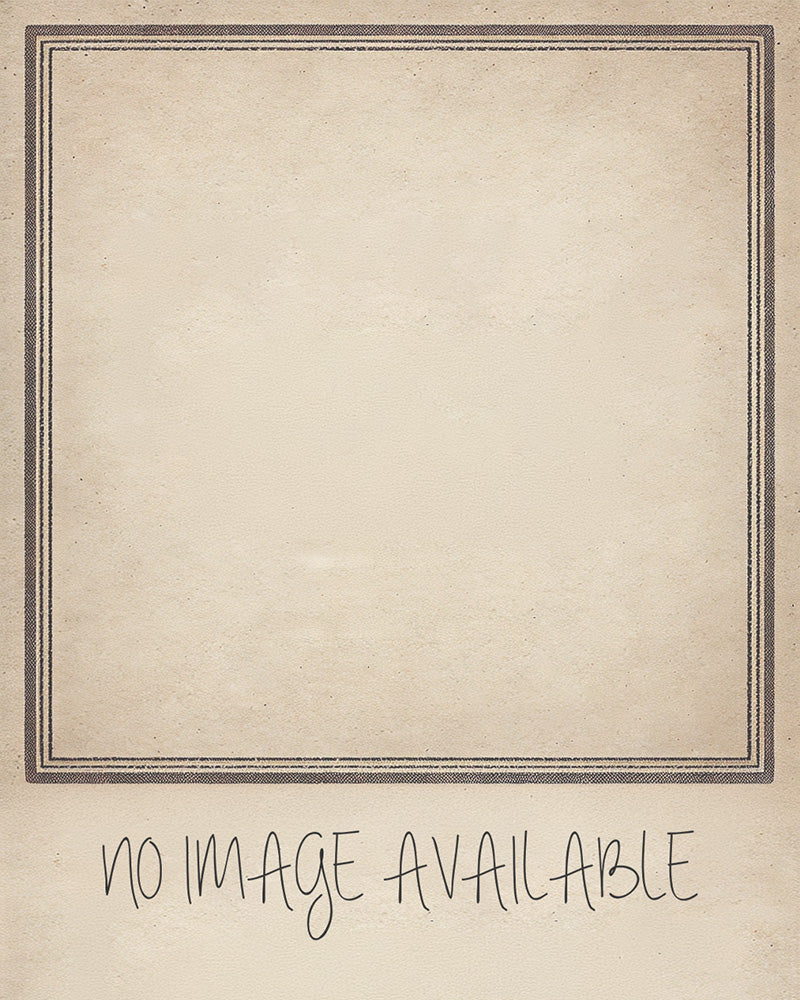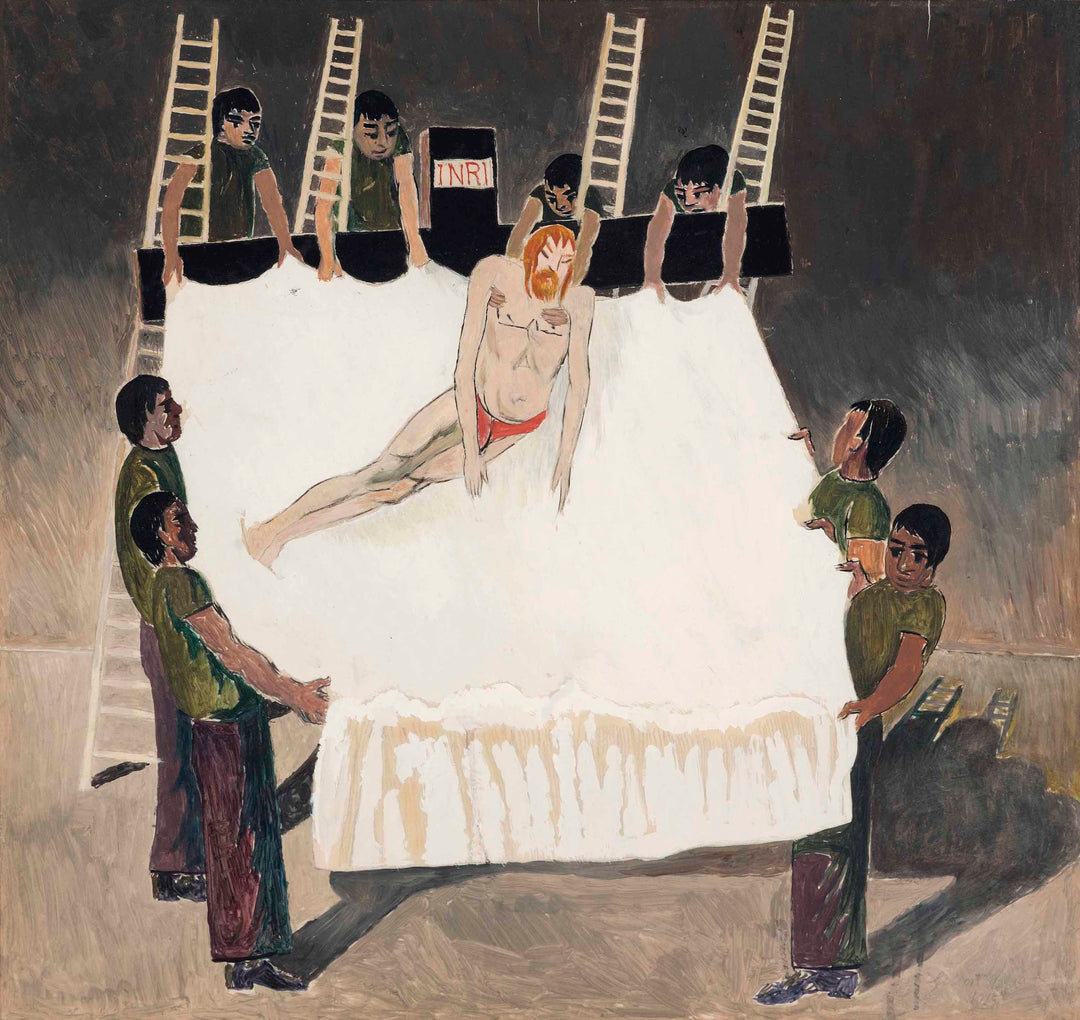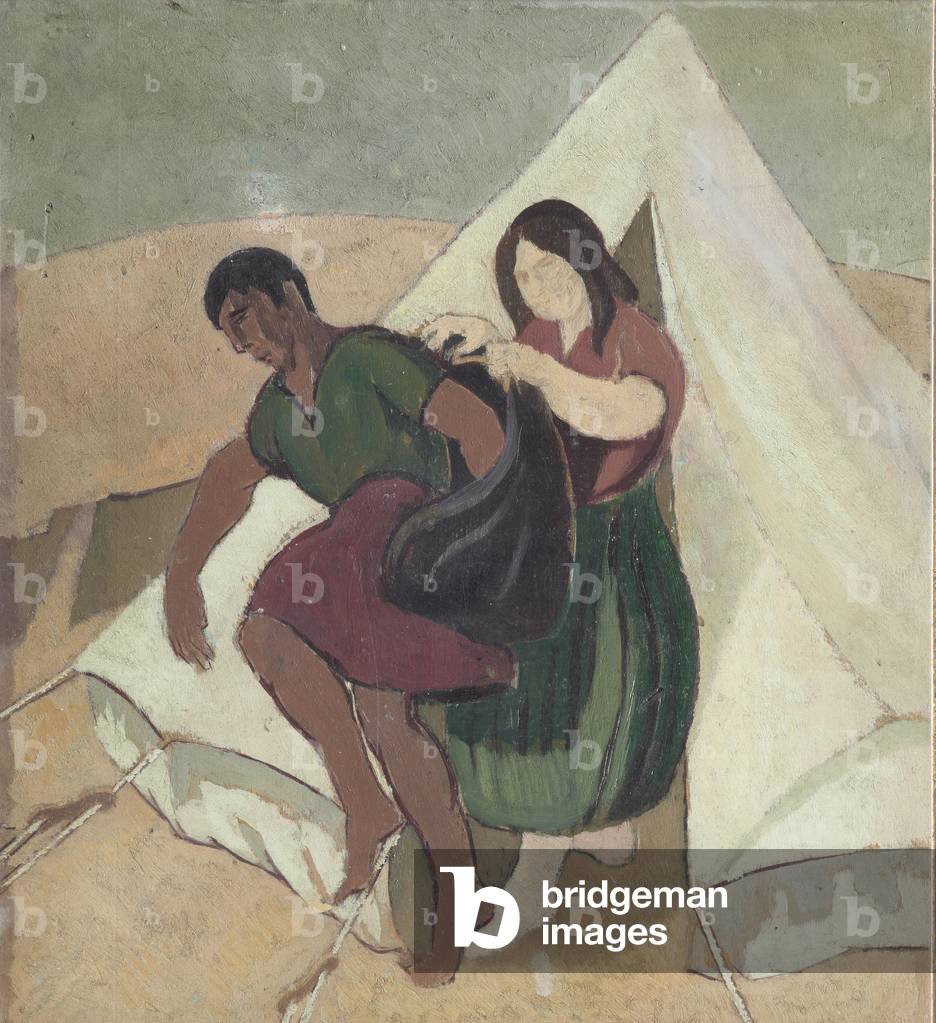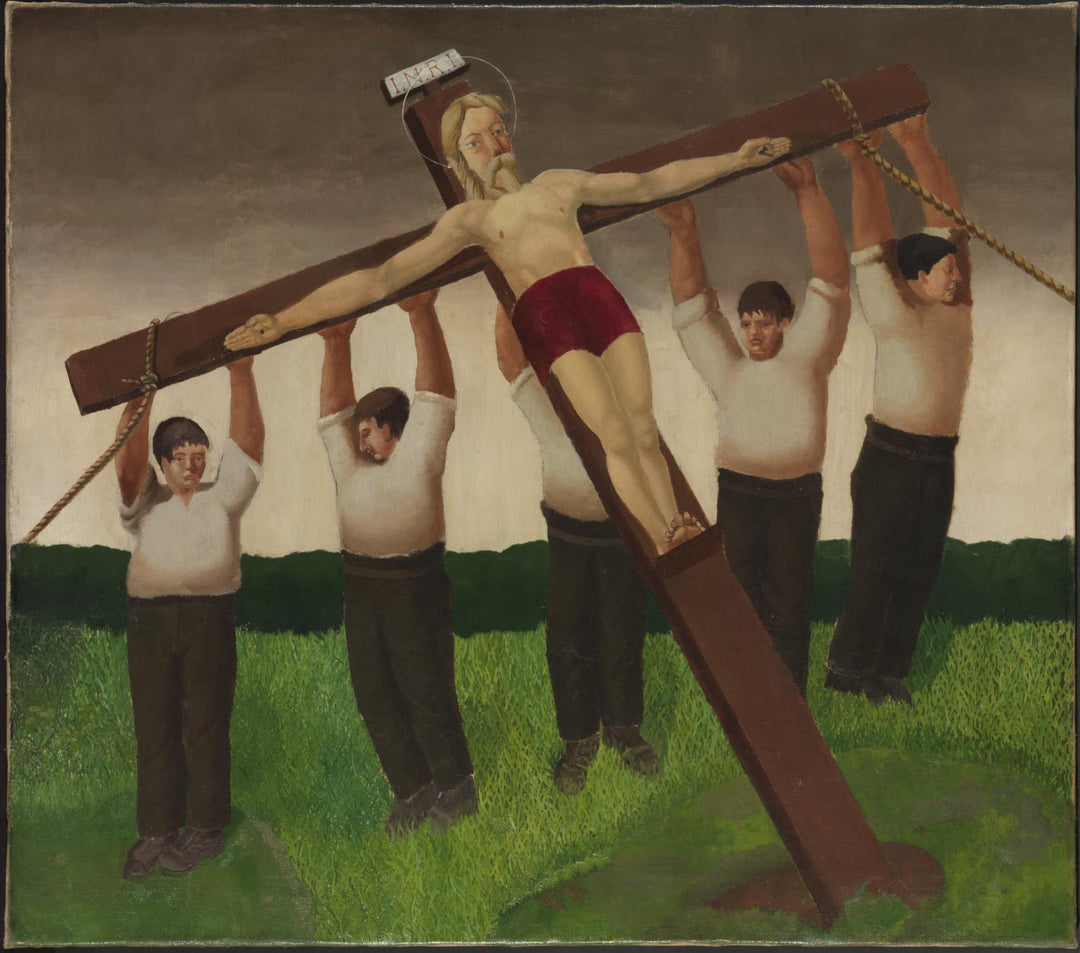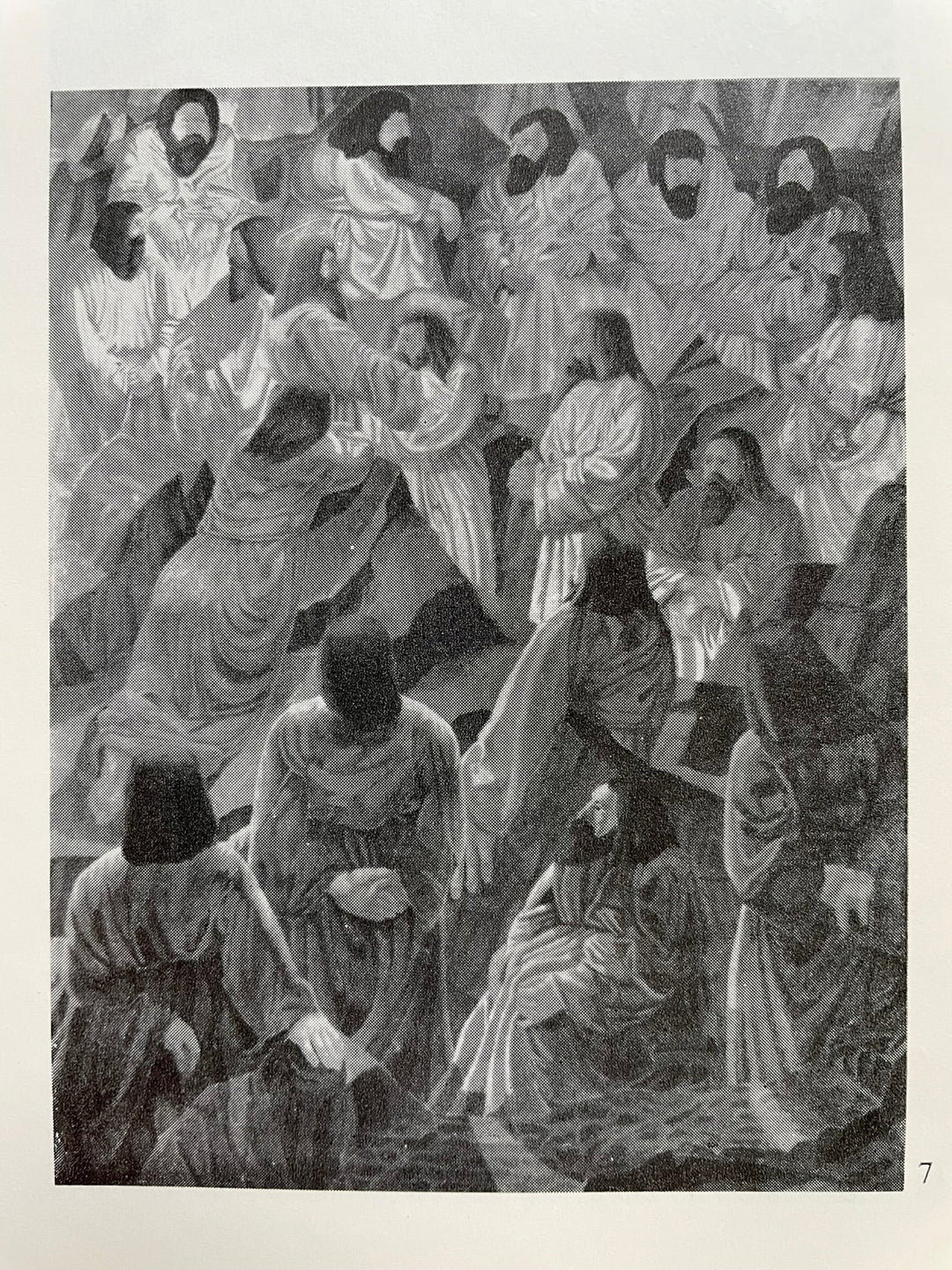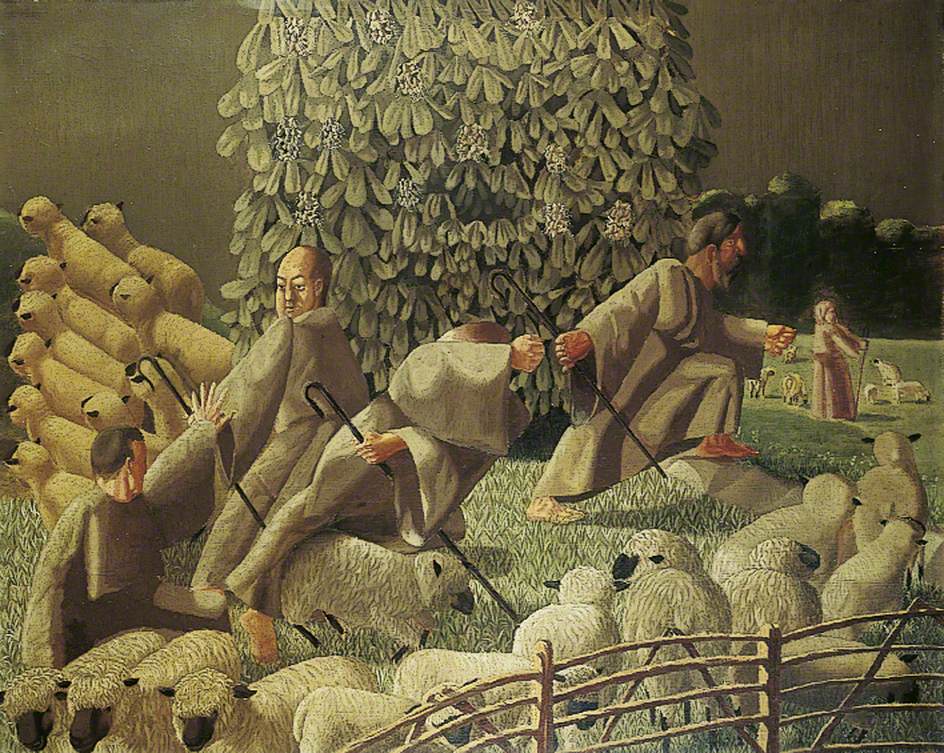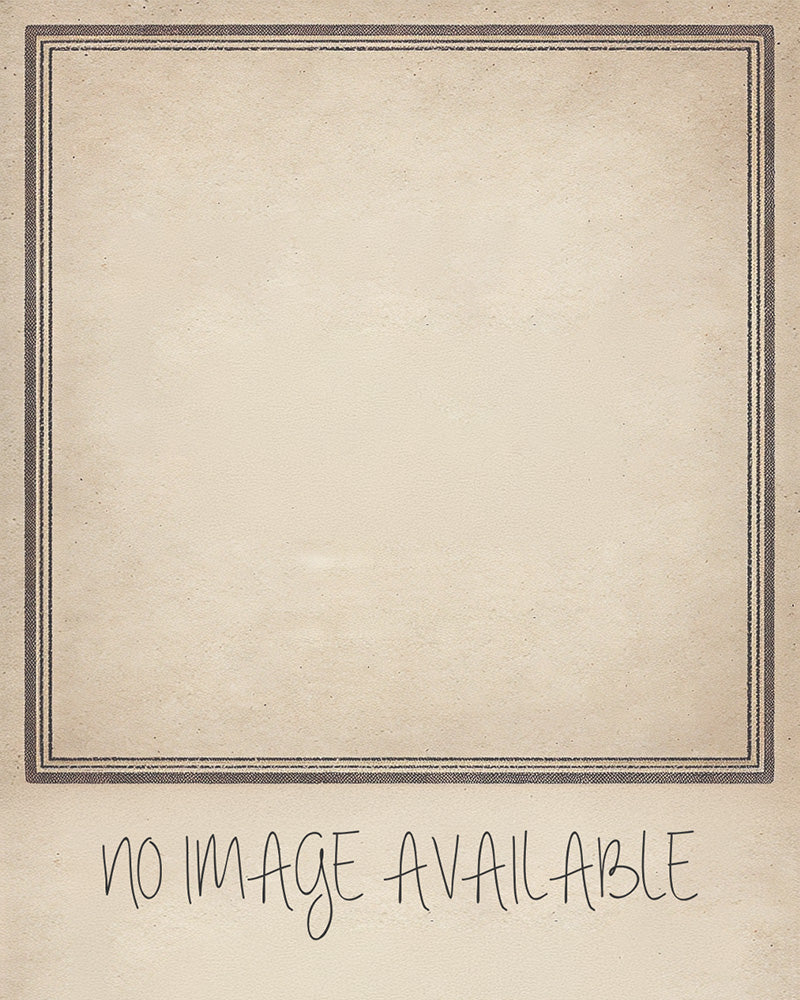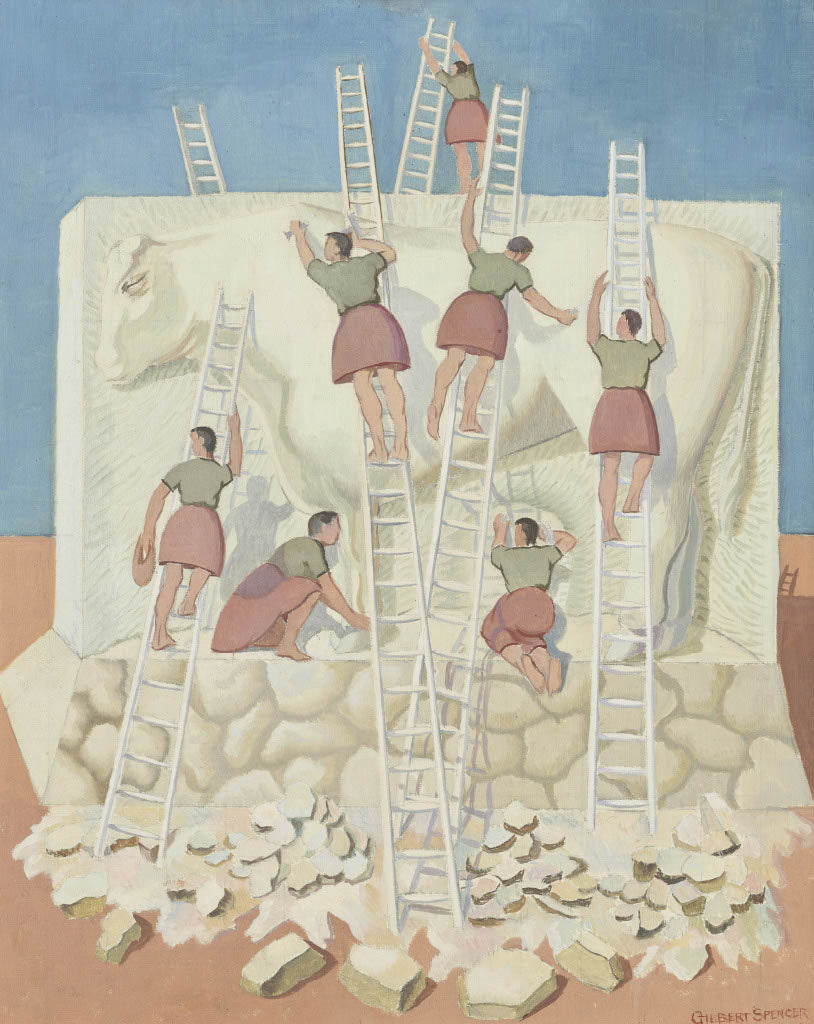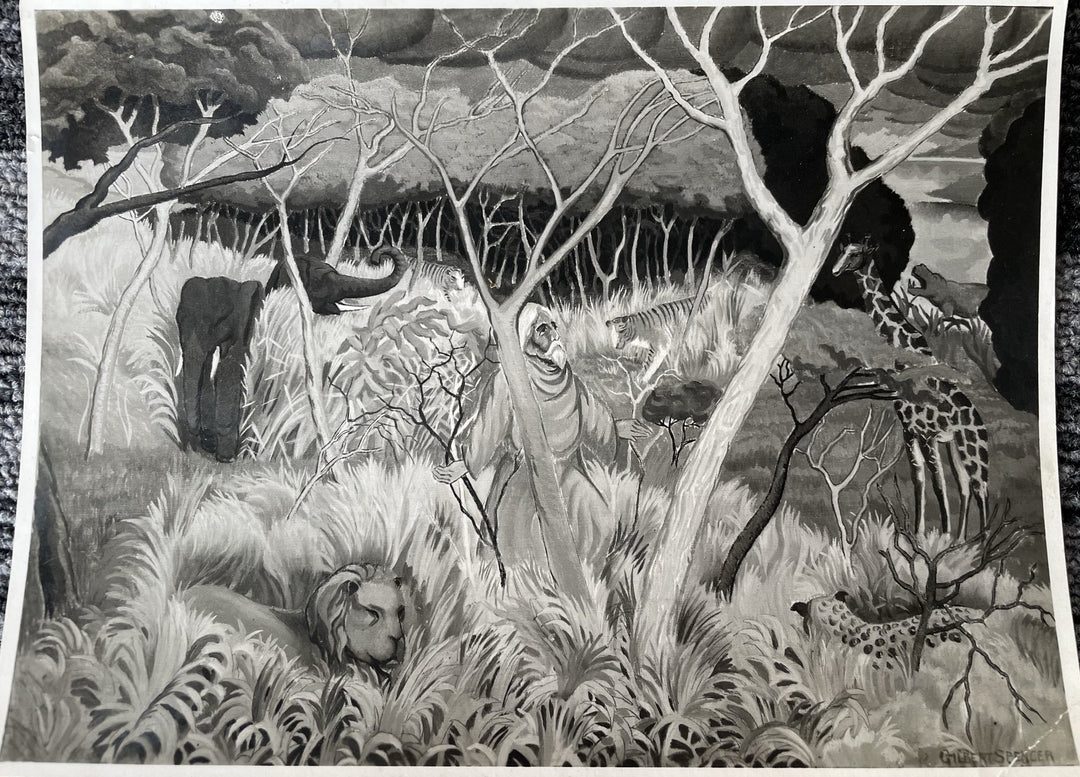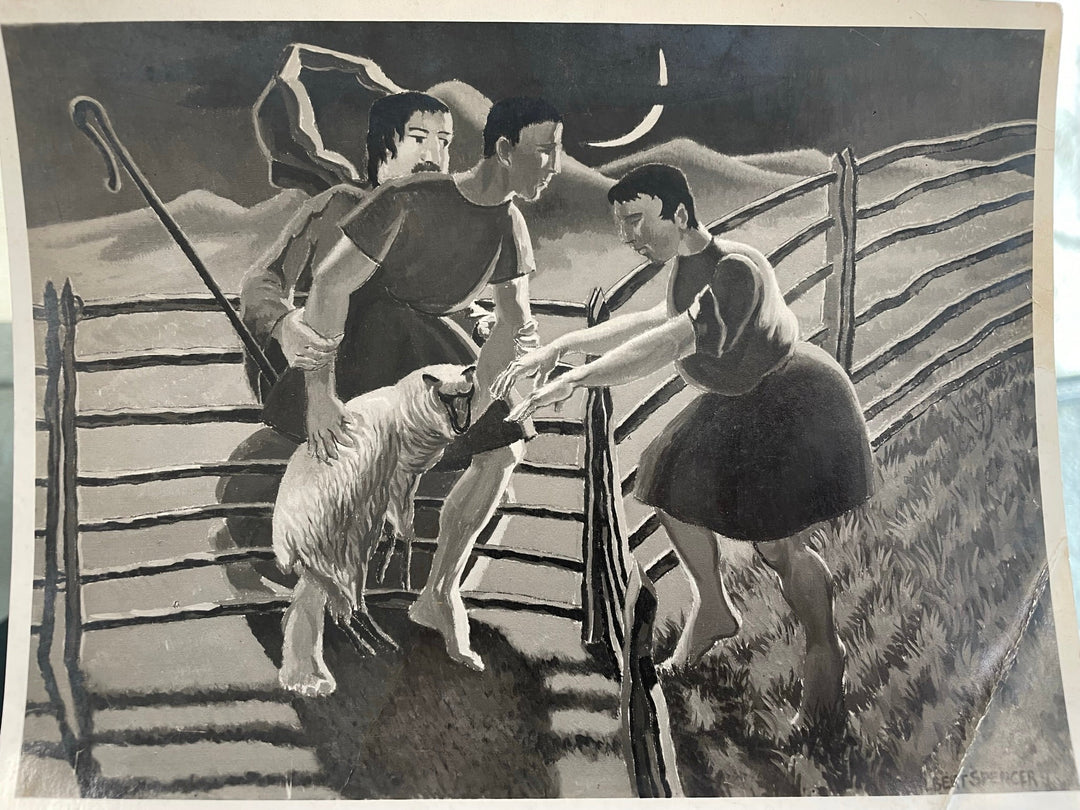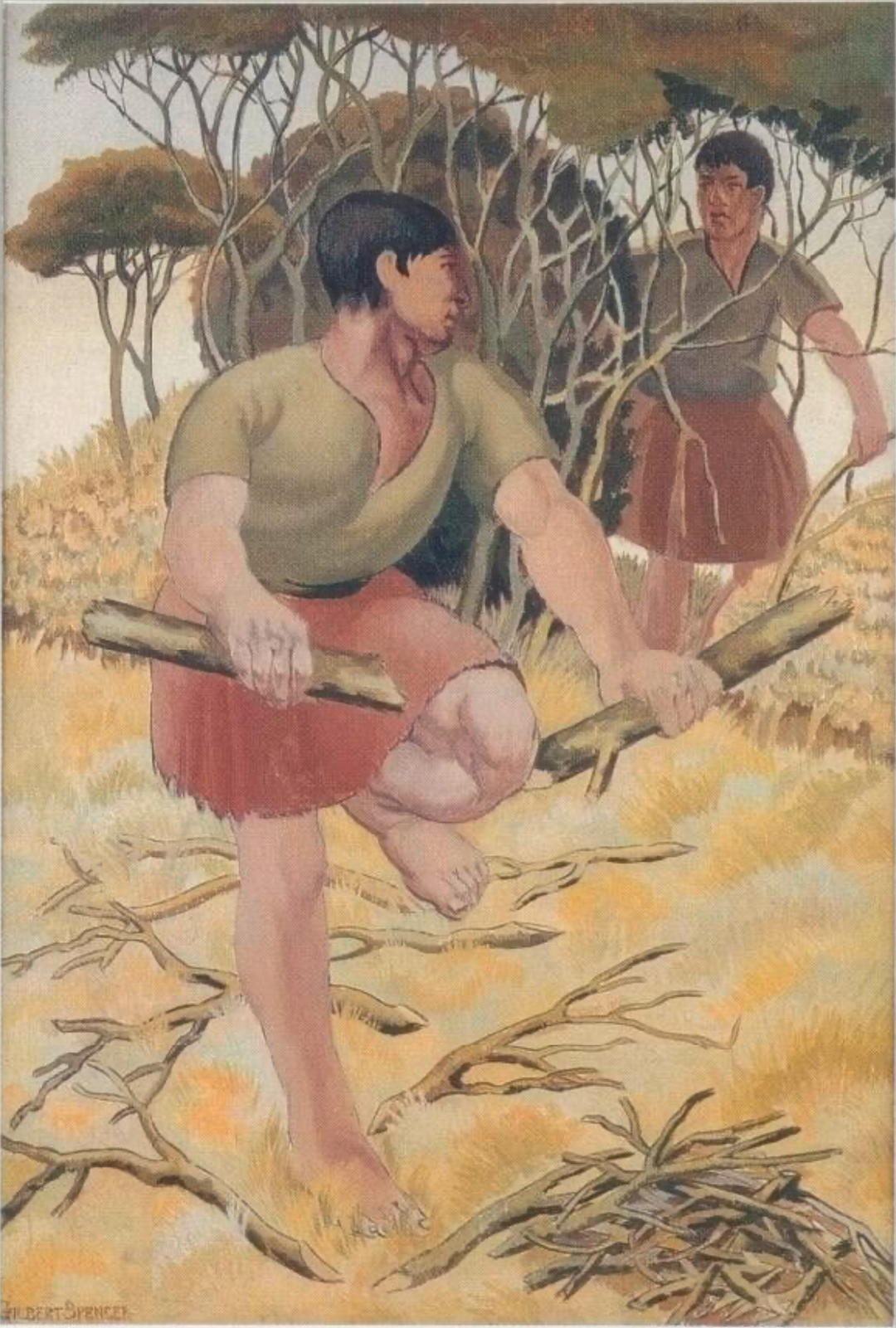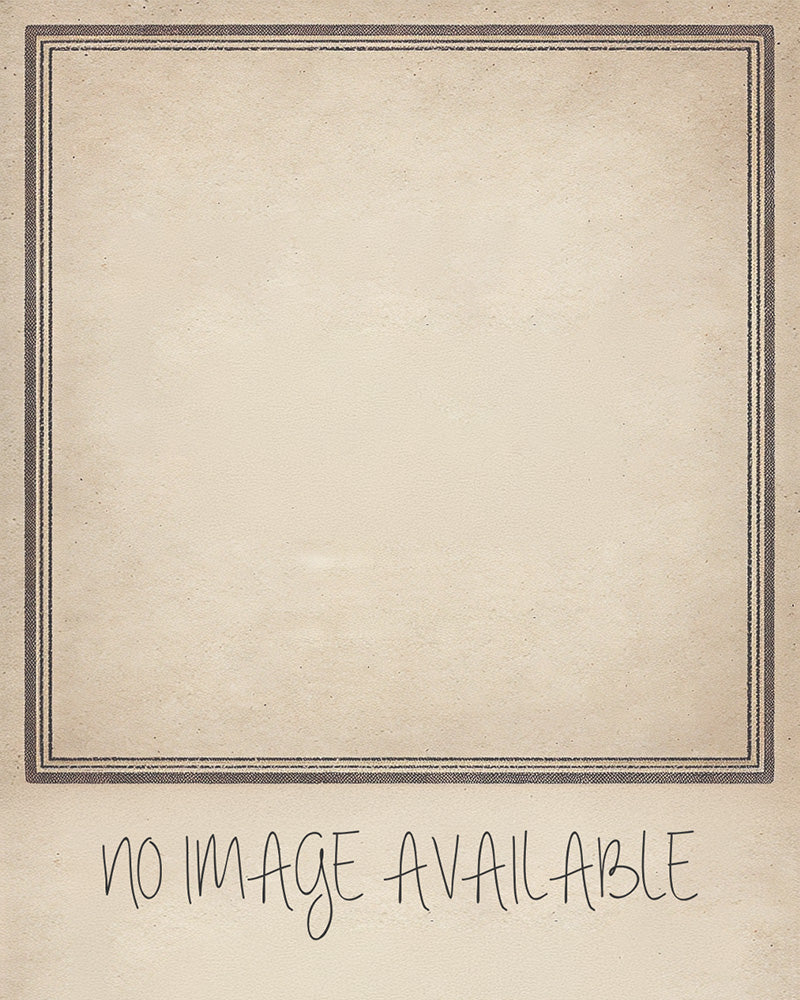Gilbert Spencer painted few Biblical subjects, most of which were conceived, if not executed, in his very earliest years as a practising artist. By his own admission, they were influenced in both style and subject matter by his brother Stanley, for whom the Bible provided his most important subject matter. The Spencer brothers were deeply versed in the Bible, reading it as modern readers might turn to a novel. Gilbert’s Crucifixion (1915, Tate) was painted while he was still a student at the Slade, and may reflect his anxiety about his imminent enlistment in the Royal Army Medical Corps. The features of Christ and the soldiers are unmistakably those of ‘Pa’ Spencer and his sons, though Gilbert claimed that the resemblance was unintentional. After his return in 1919, Gilbert worked up his pre-war drawings – some of which were intended as altar pieces – into two more Biblical paintings, The Shepherds Amazed (1920, Leeds Museum and Galleries) and The Sermon on the Mount (1921, private collection). Descent from the Cross (1960, Ingram Collection) and Ascension (1963-4, untraced), were also based on drawings of 1915 but not realised as oil paintings until almost half a century later. The concern with pattern, bold lines and strong blocks of colour in Gilbert’s Biblical paintings echo those painted by his brother Stanley in the 1910s and 1920s, though Gilbert considered that he had ‘always felt these ideas as among my most spontaneous works’.
Gilbert’s most substantial set of Biblical paintings was the result of a commission from Robert Gathorne-Hardy around 1927 to illustrate the Ten Commandments for a dedicated publication. He was enthusiastic about the project, relishing its ‘subject, scope and discipline,’ and saw it as a task for which his Slade training in draughtsmanship had given him ample preparation. Gilbert's approach was to identify and illustrate a Bible verse relating to each of the commandments, though as he produced eleven illustrations for ten commandments (plus two frontispieces), it is not entirely straightforward to identify which illustration relates to each commandment. Gilbert’s drawings in pencil, pen and ink were reproduced as lithographs and published by the Mill House Press in 1934 in an edition of 75, on thick cream wove paper with tipped-in plates.
In 1938, Gilbert used the lithographs as the basis for a series of oil paintings, and the full set of ten (The Breaking of the Tablets was omitted) was exhibited at the Leicester Galleries in February 1939. Only four of these can be located: Gehazi and Naaman (1938, private collection), The Man who Picked up Sticks on the Sabbath (1938, private collection), Making a Graven Image (1938, Art Gallery of South Australia), and Noah Summoning the Animals (1938, Art Gallery of South Australia), whilst a fifth, Sheep Stealing (1938, untraced) is known from a photograph in Gilbert Spencer’s archive. Some of the others may have been destroyed. Spencer later painted further versions of Joseph and Potiphar’s Wife (1952, Museum of Te Papa Tongarewa, Wellington, New Zealand) and The Stoning of St Stephen (1964, untraced).




